Retro Cars: Modifying Your 105 Series Alfa (2006)
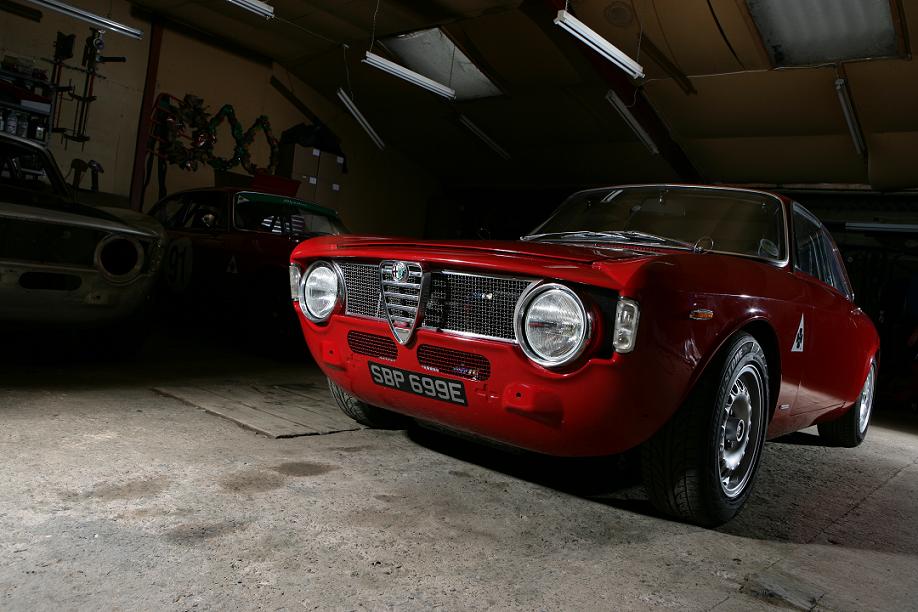
If you’re not fully awake, be warned because this might get you feeling a bit dazed and confused… Alfa Romeo’s 105 series was brought out in 1962 to replace the 101 series range of compact saloon and performance cars (which included such beauties as the Giulietta Sprint coupé and Giulietta Berlina).
Well, it did and it didn’t because production of the two series actually overlapped and to make matters really confusing, the last of the 101-series 1600cc Giulietta coupés were renamed Giulia Sprint (from 1962-’64) while the 1300cc Giulietta Sprint also lived on until 1965. Meanwhile the subject of this modding guide, the Bertone styled Giulia Sprint GT was launched in 1963.
The first of the 105 series to hit the showrooms was the Giulia Saloon, and this basic floorpan went on to spawn many derivatives, including the: Giulia Ti, Giulia Super, Giulia Giardinetta, 1750 Berlina, 2000 Berlina, 1600 Spider Duetto, 1750 Spider Veloce and 2000 Spider, and Montreal. However, it was and remains the coupé which is the most popular of the 105 cars.
Launched in 1963 as the Giulia Sprint GT, the new car had a lot more interior space than its predecessor. Its lines – created by a young Giorgetto Giugiaro – was also much more modern in appearance and included the famous step-front or scalino bonnet with its exposed leading edge. Power came from a twin Weber’d 1570cc 106 bhp version of Alfa’s all-alloy twin-cam Nord four cylinder which was, unusually for the time, hooked up to an all-synchromesh five-speed gearbox.
Finally, to make sure that this Alfa made the most of its powertrain and looks, the suspension was set-up (front lower A-arms with two upper links with precisely located live axle at the rear) for optimum handling. Indeed so successful was this update of Alfa’s Giulietta recipe, that the Sprint GT soon became the largest seller of all the 105 Giulias.
The first derivative to go on sale following the Sprint GTs launch, was Touring’s four seater convertible model the Giulia Sprint GTC – but only around 1000 were sold before Touring ceased trading. In 1966 Alfa introduced the GT1300 Junior for markets which penalised the larger engined Sprint GT with heavier taxation – unsurprisingly, it was a huge sales success.
Things though, got better in 1966 for performance minded Alfisti. At the same time as Alfa launched the Spider/ Duetto, the popular Sprint GT Veloce or GTV was launched with just 3 bhp more, a revised front grille, revised seats and trim, Veloce badging and quadrifoglio clover leaf badge on the C-pillars. It wasn’t until 1968 though and the introduction of the 1750 GTV that the Veloce’s performance lived up to its name.
However, performance criticisms couldn’t be levelled at the lightweight, alloy bodied 1600 Giulia Sprint GTA (Gran Turismo Allegerita), which featured twin-spark engines in a wide range of tune up to 170 bhp and was launched in April 1965. The 1600 GTA was a massively successful circuit racer and just over 500 of these cars were built, plus 10 supercharged GTA-SA (for Sovralimentata) one of which won the 1967 100-mile Hockenheim race outright… Around 1000 1300cc GTAs were also built over four years from 1968, with the fuel injected Autodelta cars pumping out 180 bhp at 8400 rpm from their rather special engines.
As of 1969, the Giulia Sprint GT range was facelifted and the scalino dropped. The 1750 GTV featured a more conventional front with four headlamps and a chrome whisker either side of the heart-shaped centre grille, meanwhile the Juniors made do with single headlamps. In 1971, the GTV’s 1750 engine was superceded by a larger, torquier 130+ bhp 1962cc unit and the resultant 2000GTV was given a new radiator grille, interior, and an LSD.
The last of the 105 series model launches happened in 1972 when the 1600cc GT Junior joined the ranks. It was though, a relatively short life because the 105 series GT production run came to an end in 1976 – by which time the Junior had adopted the later four-headlamped grille of the 2000GTV. Needless to say, by that time, the car which was designed to replace it – the Alfetta GT – had been in production for nearly two years…
Anyway, enough of the history. To find out how to improve Alfa’s 105-series GT, we visited Britain’s leading classic Alfa Romeo specialists, Alfaholics, where we talked to Max Banks.
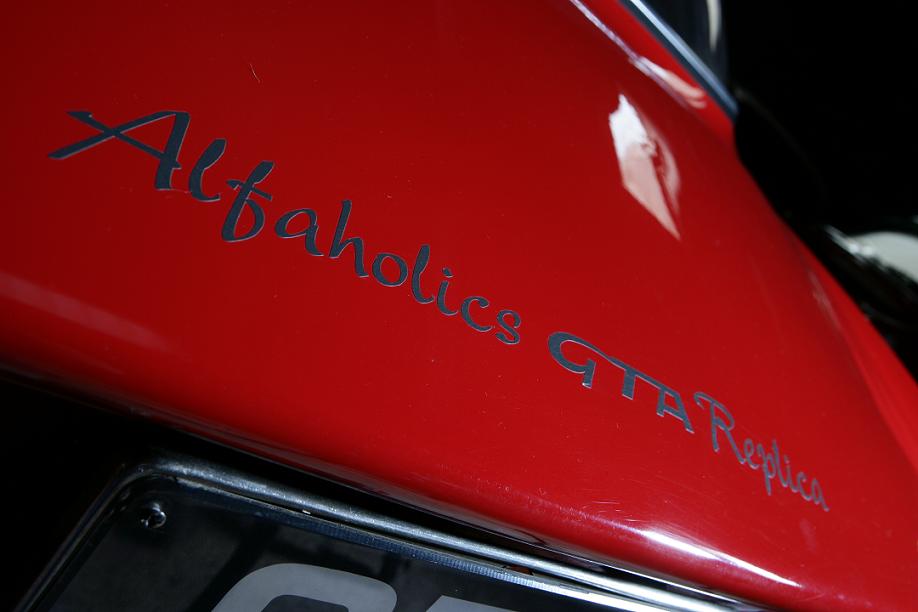
Engine
Alfa’s all-alloy, twin cam ‘Nord’ engine was built in a range of capacities from 1300cc all the way up to 2000cc and because it was such an advanced design it powered various Alfas for 40 years. “If you want to go crazy, at the race end of things, our race car has got 210 bhp from a Nord 2000cc engine – but you are spending over £10k to get that. The thing is, you can get 180 bhp out of a Nord engine but it will be getting toward the top of its limits within a sensible budget, whereas you can build a 185 bhp Twin Spark engine relatively easily. In fact, you get nearer 190 bhp before you start going really crazy” says Max. In other words, you can go down the traditional Nord tuning route or for the modern alternative depending upon what you intend to use your GT for and your available budget.

Engine Swaps
“The basic upgrade that a lot of people carry out to 1300 and 1600 cars, is to fit the 2-litre from the 2000GTV to them. Then from there, you can fit cams and modified pistons etc to raise compression and get more power,” says Max. “In terms of fitting an engine from another series of car, the one that a lot of people are catching on to is the transplant which we first did 10 years ago – and that’s fitting the Alfa 75 2-litre Twin Spark engine. Aside from giving you more power for less money, it’s got flat-top pistons instead of hemispherical pistons which give a better burn rate. “They’re great, they’re grenade proof. My brother had a 75 for four or five years and he used it everyday and even took it to the old Nurburgring Nordschleife. He beat the hell out of that car and it didn’t burn a drop of oil – it was perfect until the day he sold it. They’re cracking engines… “It’s an 8-valve twin plug engine which delivers 148 bhp out of the box (compared with 120 bhp from a Nord) and you can fit it with the standard 75 fuel injection. The only thing you have to do is, because the 75 has a rear-mounted gearbox, drill the end of the crank for the input shaft of the gearbox. The bell-housing though, will fit directly onto the gearbox and onto the Twin Spark engine. “Then it’s just a matter of fitting the ECU somewhere inside the car, wire it all up and it’ll work – it’s plug and play. The way we’ve always done it though is to go a little bit further with it. We tend to run it on carburettors via a Jenvey inlet manifold, get rid of the distributor and put it on a mapped ECU set-up. That’s about it. “Some people have gone to the extreme of fitting a 3-litre V6 from the Alfa 75, but it’s a bit of work. You have to cut the inner wings to create more space and cut the engine cross member to clear the bigger sump. To be honest, I think it’s going a bit overboard because the V6 is very heavy and it doesn’t do much for the handling… “At the moment, we’ve got an engine sitting in the workshop for sale. It’s got 183 bhp on carburettors and race cams, but being on fully mapped ignition it allows you to drive down to the shops in it,” says Max. In other words the Twin Spark engine will give you far more power than an original Nord and then, if you want more, Alfaholics can supply you with all the necessary bits to make it more potent. As for sourcing a 75 Twin Spark, the engines are a bit hard to find – but the cars aren’t. Typically you can pick up a 75 MoT failure for around £150-200 and this will also provide other goodies if you’ve got a GT Junior. “These had a smaller caliper bolt spacing on the upright, so you take the aluminium Brembo calipers off the 75, remove the spacer from the middle of them (these were to clear the 75’s vented discs) and then you can run a lightweight caliper.”
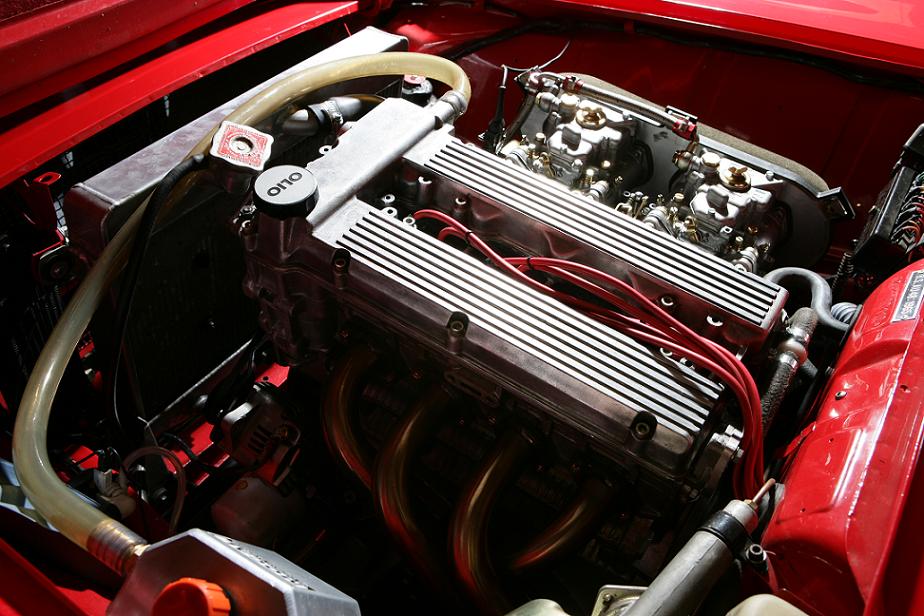
Transmission
It wasn’t just in the engine department that Alfa made a lot of British tin look a bit remedial because behind the twin-cam engine, was an equally sorted and precise five-speed gearbox.
“A particularly nice gearbox to have for trackdays is the 1300 GT Junior one which was only fitted to the coupé because it’s got a shorter fifth gear ratio,” says Max. “It’s a really good gearbox with a long but very accurate gearchange which is very satisfying. The standard ratios are perfect for road and trackday use. They’re very solid and generally don’t cause any problems – you just replace synchros every so often if you get a baulked gearchange,” says Max. “There are more extreme alternatives available for track cars, for instance we can supply GTA-spec close-ratio lightweight gear clusters.
“The standard clutch is a pretty decent set-up. When we started to race we used it but found that we were having to replace clutch parts a lot because they were breaking. Even though they’d always last races. However, now we’ve managed to source an uprated clutch pressure plate and a lighter weight, better friction material from Sachs which is a direct fitment to the standard flywheel. We can even do lightweight, billet-turned CNC machined flywheels for people too. Then if you want to go racing you can run a flat flywheel with a proper twin-plate paddle clutch.”
Moving further back along the transmission and the GT came with a range of differentials. Standard GT Juniors, 1300s and 1600s came with a non limited slip 4.5:1; 1750GTVs came with a non limited slip 4.1:1 diff; and the 2000GTV came with a 4.1:1 LSD. The only problem is that the 4.1:1 ratio is a little bit high for the track, so what you ideally need is a 4.3:1 diff from a 2000 or 1750 Berlina. Unfortunately though, this is a rare model so many GT Juniors are making do with the 2000GTV 4.1:1 LSD unit.
“That sorts the majority of people out, but if you really want to get into trackwork and a bit of racing, ratios like a 4.5, 4.7, 5.1, 5.3 and 5.8 are all available. Indeed because the cars weren’t designed for an LSD Alfa unit, we have a racing differential made for us which fits with the small halfshafts. (It’s a nice lightweight diff which works with GT Junior halfshafts that are smaller than the 2-litre ones making them lighter but plenty strong enough),” says Max.
While we’re talking about halfshafts, like the propshaft, they’re well engineered components which don’t tend to give trouble. The only exception being the coarse splined GTA halfshafts which were rifle drilled to make them lighter (and therefore more likely to fail). “Only on very early cars did they suffer from problems with the propshaft’s centre support bearing,” advises Max.
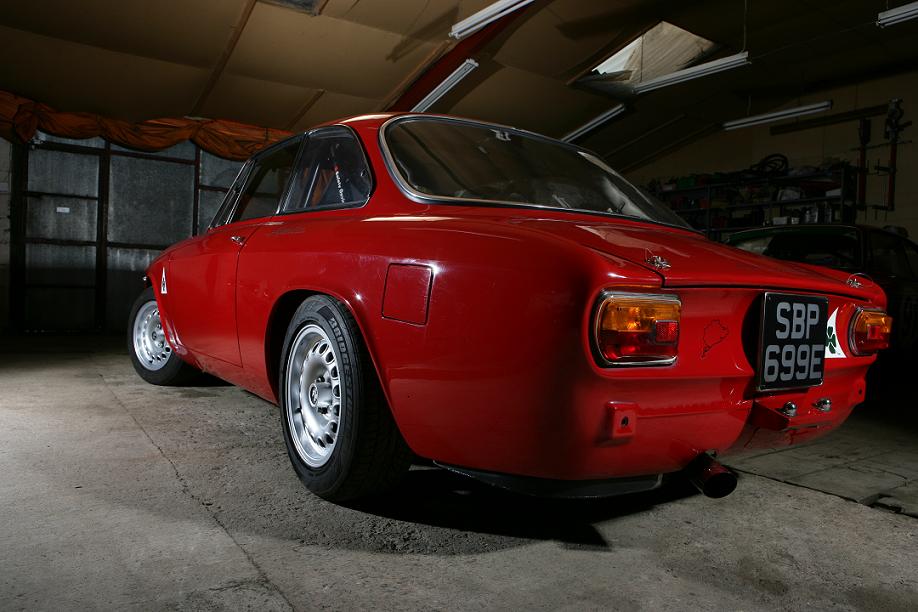
Suspension
The standard set-up on these Alfas is okay and they do tend to handle rather nicely. However, once you start tuning the engine, then this will all change rather rapidly.
“We supply suspension kits and loads of different options – they’re £350 for a kit plus dampers. We recommend Koni Sports for fast road and trackday use, and for cars which are much more focused on trackday use/ race cars we then go up to Bilstein dampers (£60 each) with Koni Sports (£55 each).
Alfaholics also tailor kits to suit individual requirements. Small diameter 2.25 inch race spring kits are also available which are fitted with aluminium CNC machined top-hat pieces (top and bottom) which help to save a lot of weight. Other goodies include Watts link kits for the rear and for the really serious, front tubular wishbones.
“Polyurethane bushes are available for these cars but you have to be careful because there are certain areas where they don’t work. We’ve tried all the options and with our kits we’ve worked out what you need to have in polyurethane, what you need to have in a high Shaw rated rubber and what you need to have in a metallastic type bush,” says Max.
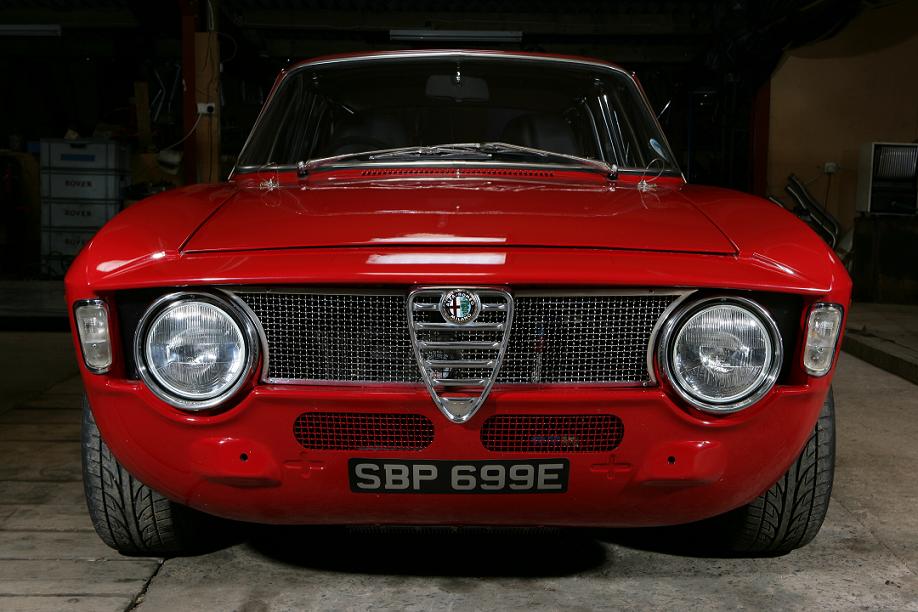
Brakes
“On all cars, apart from 1750 and 2000GTVs, the cars ran a small brake pad and disc which isn’t up to trackday use – they’ll overheat and you’ll have problems. Brakes on the 2-litre cars are pretty decent but if you want real stopping power, we offer a billet caliper four-pot brake kit. The only thing is that they’re selling like hot cakes and we can’t stock enough of them,” says Max. “It’s a proper vented 280 mm disc and the four-pot calipers have huge pads. We sell them either as a trackday kit or race kit and they fit both sizes of upright fitted to these cars.”
Incidentally, if your car isn’t an original UK-spec model… The GT only came with dual circuit brakes from 1971 which was when the left-hand drive cars changed from floor-mounted to pendulum pedals. So that means all step-front cars have single circuit brakes.
Wheels
Up until 1967 all cars had 4.5J x 15 inch steel wheels complete with hubcaps, but from 1968 all cars came with 5.5J x 14 inch steel wheels with hubcaps, which can accommodate a reasonable amount of rubber. However, Alfaholics have again come up trumps with a direct bolt-on alternative which is an aluminium copy of the GTA’s magnesium Campagnolo wheel design and these are available in 6J x 14 and 7J x14 sizes. So not only can you increase the size of your Alfa’s rubber footprint, but it makes the car look a whole lot better, too.

Outside and In…
Ah, bodywork. The rusting reputation of old Alfa Romeos is one of the great hackneyed motoring quips, but for the later GTs all repair panels are available to sort out any outbreaks of bubble trouble.
The only thing you should do is, if you’re thinking of buying one of these cars, to make sure that you go for the one with the best bodywork you can afford.
Incidentally, we’re not just talking about something with plenty of holes in it in need of a complete restoration, because poorly rebuilt (ie bodged) cars can end up costing you more in the long term than starting from scratch. So do make sure you source a car from a reputable source.
This note of caution is particularly true of step-front cars because the front panels are very hard to find. Rear wings are available, but these are the later ones with a shallower type rear arch and not the early 1964-67 deep rear wings which are no longer available. Although GRP front panels are a possible alternative if the unthinkable happens.
Anyway, enough of the preaching, let’s get on with the sexy stuff. Alfaholics does a comprehensive range of aluminium body panels for those who are serious about their racing. Aluminium door skins, complete bootlids, skinned bonnets and even wings – but when you get to this stage you probably should be thinking about skinning the entire car in aluminium and this is not a cheap exercise.
Alternatively, if you’re building a trackday car and can’t afford the expense of dent-prone ally panels then you can opt for GRP. Indeed, Max has fitted a GRP boot and bonnet to his GTA replica (pictured) – although he has retained steel doors for safety.
As for the interior – rollcages are available from Alfaholics (both weld in and shortly, bolt in types), and Sparco race bucket seats are also freely available. However, if your GT is more road spec and you’re searching for a bit of long lost trim or are trying to replace a cracked dashboard then either check out Alfaholics website or pick up the phone.

Alfaholics
Alfaholics was started in the late in ’90s by Max’s father, Richard, initially as a Alfa Romeo parts specialist. At first, this was with the help of a business partner but soon Richard – an already established and highly respected name in the Alfa world – went it alone and the company has since become a family business.
“This allowed us complete control of the business thus we were able to take it in the direction that we wanted, too. We always felt that performance upgrades and racing parts would be a great thing for the company to do, but this had not been commonly agreed… Now we are spending a fair amount of time concentrating on these markets and its helped by the fact that there is nothing I love more than racing and developing 105 series Alfas!”.
“Now instead of just getting standard parts and panels for your Alfa, you can get anything from aluminium fuel tanks, aluminium radiators, suspension upgrades, small spring kits, bodywork parts, lighting… It’s become a one-stop shop.”
If you are serious about modifying your 105-series GT then you’ve got to visit www.alfaholics.com because it’s one of the best company websites we’ve come across. Aside from the usual parts, prices and car sales listings, there are sections devoted to magazine articles on the company, photo and movie galleries and accounts of the Banks’ racing exploits. In fact, you could call it a virtual drop-in centre for Alfisti…
As for Max’s awesome Twin-Sparked GTA replica, well, we’ll give you the full low-down in a future issue.
Words: Simon Charlesworth
Photography: Gerard Hughes